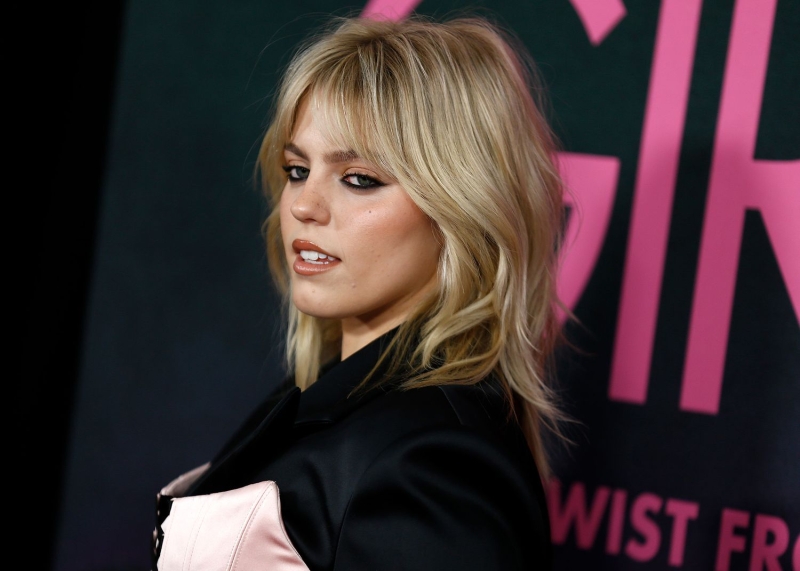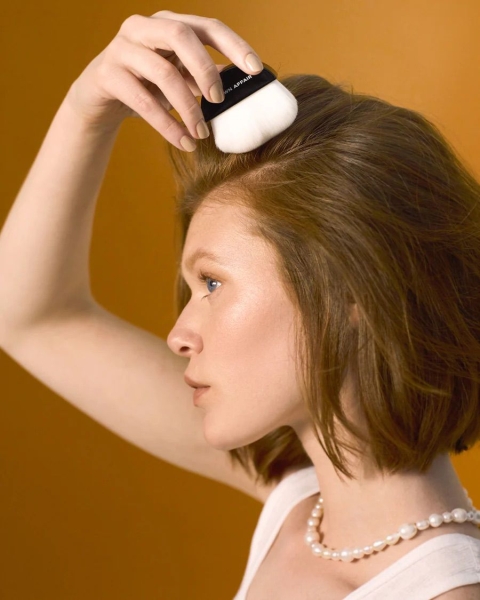Contents

At this point, we think it’s safe to say that everyone is fairly familiar with dry shampoo. The classic aerosol spray has been a second-day hair savior for over a decade, and it’s one hair product that most women have in their weekly (if not daily) roundup. What’s interesting, though, is that new dry shampoo formulations are drawing inspiration from the past.
Meet the expert
- Marwa Bashir is a celebrity colorist and stylist who works with stars like Reneé Rapp.
- Alyssa Kobel is the vice president of brand marketing at Dae hair care.
- Garren is a celebrity stylist and a co-founder of R+Co hair care.
See, once upon a time (like in the ’80s and “90s), people would sprinkle baby powder into their strands to absorb oil and nix greasy roots on the spot. Ultimately, the issue around this technique was that talcum typically left a white residue that made hair look duller overall. Thus, aerosol dry shampoos were created and, over the years, tailored to apply clearly. Of course, with eco-friendly initiatives top of mind in our globally warming world, hair-care formulators have been looking for ways to address oily strands and flat, day-old’ dos without harming the atmosphere in the process. And what’s come of it, you might ask? Powder dry shampoos.
What is Powder Dry Shampoo?
According to celebrity colorist and stylist Marwa Bashir—who works with Maren Morris, Kristin Cavallari, and Reneé Rapp—powder dry shampoo is a more natural oil-absorbing method. It relies on cornstarch, arrowroot powder, rice starch, and/or tapioca starch formulations.
These are the same primary ingredients you’d find in typically aerosol dry shampoos, simply without the propellants. Because of this, Alyssa Kobel, VP of brand marketing at Dae, says dry shampoo powders work just as well to absorb excess oil and impurities at the root, ensuring that hair looks fresh and lifted after use.
The Benefits of Powder Dry Shampoo

The benefits of powder dry shampoo are two-fold, in that they benefit the user, as well as the environment.
From an efficacy stance, Bashir says that powder dry shampoos typically outperform aerosolized dry shampoo. That’s because powder formulations are more concentrated and it’s easier to sprinkle them with precision. As convenient (and mess-free) as spray dry shampoos can seem, when you hold down the nozzle, the particles are dispersed in a way in which some are lost in the air, as opposed to in the strands.
In addition to absorbing excess oil with ease, dry shampoo powder is a godsend for flat hair. “Dry shampoo powder will help to put volume back in the roots and give second day hair shape,” explains celebrity stylist and R+Co co-founder Garren. The powder attaches to each strand, adding texture in the process. This can make hair look bouncier and more voluminous overall.
Then there are the environmental benefits. Powder dry shampoos are made without propellants, which means they’re free of harmful volatile organic compounds (VOCs), like carcinogenic benzene, which have been said to interfere with water, soil, and the ozone, as well as human health. (It’s worth mentioning, knowledge of the harmful effects of VOCs has led some beauty companies — Amika, Vegamour, Verb are just a few—to release benzene-free aerosolized dry shampoos, so powder dry shampoos aren’t the only way to tailor your oil-absorbing haircare routine for your health.)
How to Apply Powder Dry Shampoo
Powder dry shampoo comes in a few forms. First up, is the puff form. The R+Co Skyline Dry Shampoo Powder ($34), Dae Fairy Duster Volumizing Dry Shampoo Powder ($30), Prose Custom Powder Dry Shampoo ($30), Klorane Non-Aerosol Dry Shampoo with Oat Milk ($24), and Verb Dry Shampoo Powder ($20) feature a non-aerosolized applicator that puffs the powder into place
Next, are brush-on formulas. The Crown Affair Dry Shampoo ($36), The Rootist Talc Free Dry Shampoo Powder ($26), and I Dew Care Dry Shampoo Powder ($18) are designed to be brushed on.
Finally, there are sprinkle-on formulas like the Oribé Serene Scalp Dry Shampoo Powder ($46), which are meant to be merely sprinkled in place. All this is to say, your powder dry shampoo application will depend on the exact product you use.
For best results, Kobel says to section your hair and apply poof-propellant powder dry shampoo from four to six inches away, directing it toward the roots. (Brush-on powder can be applied directly.) “Let the powder sit for a few seconds to absorb and then gently massage it in with your fingertips or with our exclusive dry shampoo blending brush,” the Dae Fairy Duster Dry Shampoo Kabuki Brush ($20), she adds.
Bashir agrees with this method, noting that massaging the powder into the hair is a must. “Dry shampoo powder can have more of a white cast, so it’s important for it to absorb and be brushed or rubbed into hair,” she explains.
Frequently Asked Questions
- Which hair type is the best candidate for powder dry shampoo?
All hair types can benefit from powder dry shampoo; however, thanks to the texture-enhancing, volume-boosting effect, it’s especially great for folks with fine hair, Garren says, and Bashir agrees. “Fine hair tends to go greasy faster, so this could help elongate your fresh-looking hair,” Bashir adds. Kobel says to take a less is more approach when tailoring dry shampoo powder to your hair type. “Start with a little and work up from there,” she says. “[Dry shampoo powder is] incredibly buildable and concentrated, so a little goes a long way.
- Is powder dry shampoo good for your hair?
Like aerosolized dry shampoo, powder dry shampoo is perfectly fine to use on your hair so long as you give your strands and scalp the TLC they deserve between uses. “Using powder dry shampoo excessively can clog pores, so make sure to exfoliate and really cleanse your scalp when extending washes with any type of dry shampoo,” Bashir says. The best way to refresh your scalp post-dry shampoo is with clarifying shampoo, like the K18 Biomimetic Hairscience PEPTIDE PREP™ Clarifying Detox Shampoo ($38), OUAI Detox Shampoo ($32), or Bumble and bumble Sunday Clarifying Shampoo ($34).
- What is the best powder for DIY powder dry shampoo?
In a pinch and need dry shampoo right this second? You can whip up your own at home using the same household ingredients: cornstarch, arrowroot powder, rice starch, and/or tapioca starch. Of those, Bashir recommends arrowroot powder most of all. Try it or combine a few and experiment to see how your DIY concoction affects your hair’s sebum and sheen. “If you want to add some of your own scent, add a drop of essential oil of your choice,” Bashir adds.

